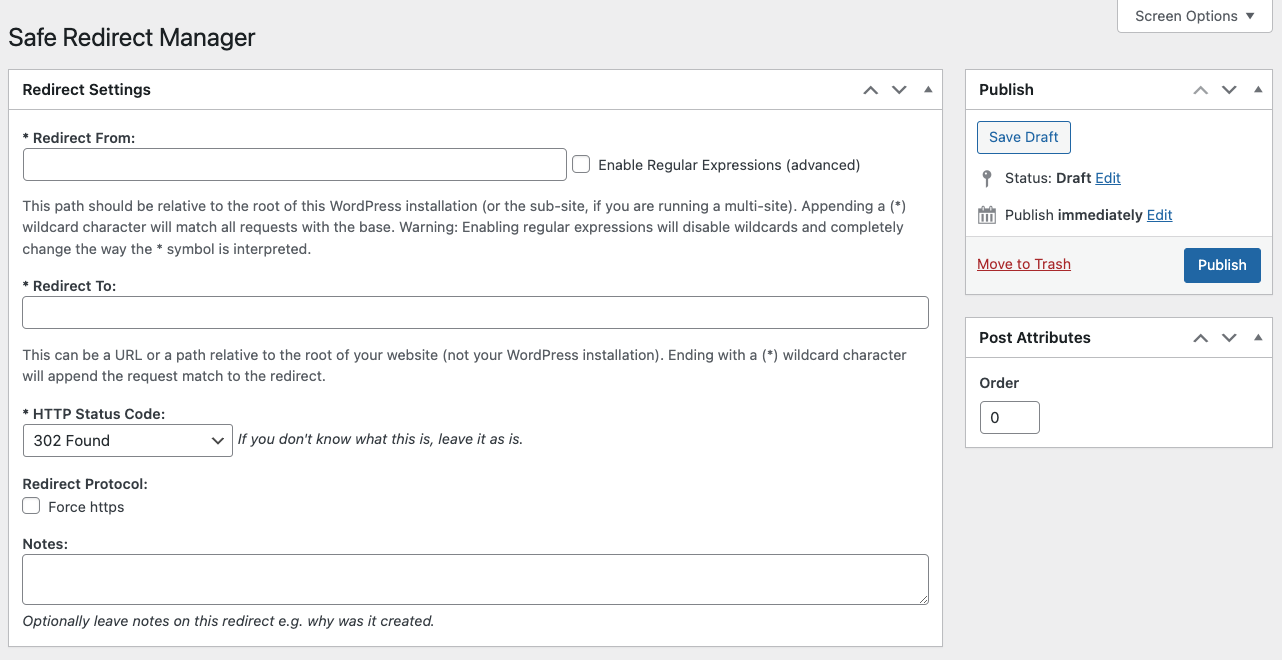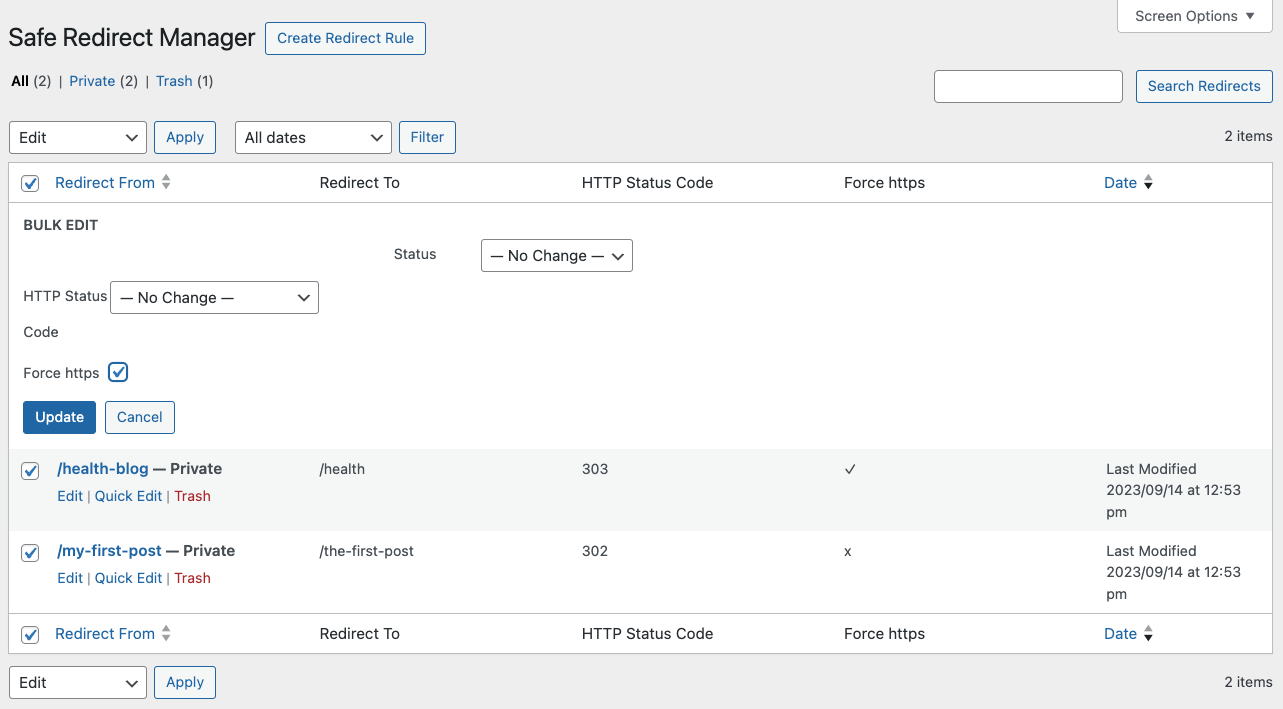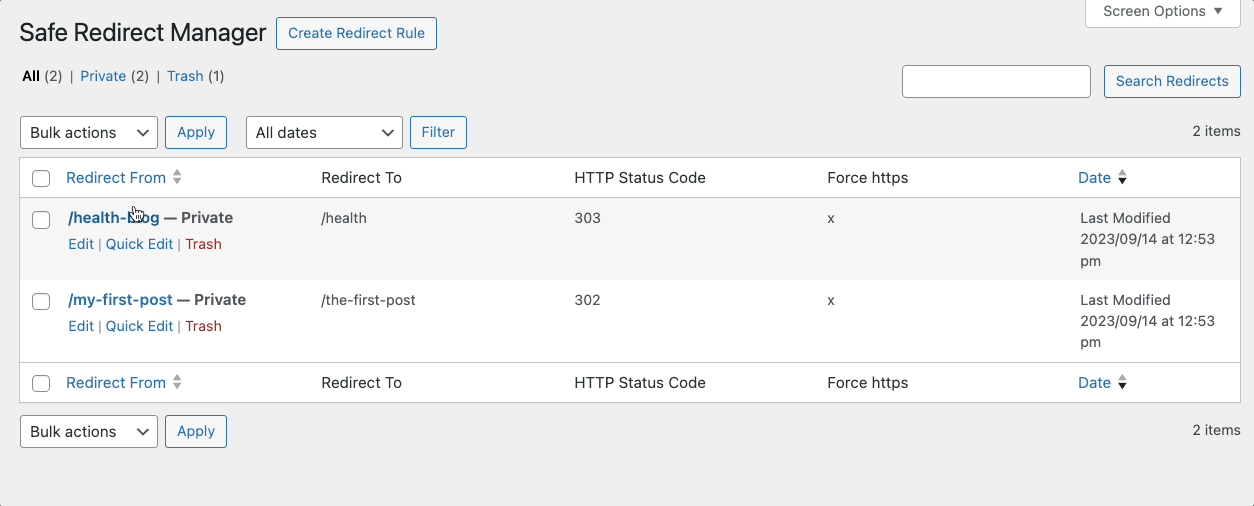Enable SVG uploads and sanitize them to stop XML/SVG vulnerabilities in your WordPress website.
Safe Redirect Manager
Hospedagem WordPress com plugin Safe Redirect Manager
Onde posso hospedar o plugin Safe Redirect Manager?
Este plugin pode ser hospedado em qualquer servidor que possua WordPress instalado. Recomendamos fortemente escolher uma empresa de hospedagem confiável, com servidores adaptados para WordPress, como o serviço de hospedagem de sites da MCO2.
Hospedando o plugin Safe Redirect Manager em uma empresa de hospedagem confiável
A MCO2, além de configurar e instalar o WordPress na versão mais nova para seus clientes, fornece o plugin WP SafePress, um mecanismo singular que salvaguarda e otimiza seu site conjuntamente.
Por que a Hospedagem WordPress funciona melhor na MCO2?
A Hospedagem WordPress funciona melhor pois a MCO2 possui servidores otimizados para WordPress. A instalação de WordPress é diferente de uma instalação trivial, pois habilita imediatamente recursos como otimização de imagens e fotos, proteção da página de login, bloqueio de atividades maliciosas diretamente no firewall, cache avançado e HTTPS ativado por padrão. São recursos que potencializam seu WordPress para a máxima segurança e o máximo desempenho.
Safely manage your site’s redirects the WordPress way. There are many redirect plugins available. Most of them store redirects in the options table or in custom tables. Most of them provide tons of unnecessary options. Some of them have serious performance implications (404 error logging). Safe Redirect Manager stores redirects as Custom Post Types. This makes your data portable and your website scalable. Safe Redirect Manager is built to handle enterprise level traffic and is used on major publishing websites. The plugin comes with only what you need following the WordPress mantra, decisions not options. Actions and filters make the plugin very extensible.
Crie um fork do plugin no GitHub.
Configuração
Não existem configurações complexas para este plugin. Para gerenciar redirecionamentos, navegue até o painel administrativo (“Ferramentas” > “Safe Redirect Manager”).
Cada redirecionamento contém alguns poucos campos que você pode usar:
“Redirecionar de”
This should be a path relative to the root of your WordPress installation. When someone visits your site with a path that matches this one, a redirect will occur. If your site is located at http://example.com/wp/ and you wanted to redirect http://example.com/wp/about to http://example.com, your “Redirect From” would be /about.
Clicking the “Enable Regex” checkbox allows you to use regular expressions in your path. There are many great tutorials on regular expressions.
You can also use wildcards in your “Redirect From” paths. By adding an * at the end of a URL, your redirect will match any request that starts with your “Redirect From”. Wildcards support replacements. This means if you have a wildcard in your from path that matches a string, you can have that string replace a wildcard character in your “Redirect To” path. For example, if your “Redirect From” is /test/*, your “Redirect To” is http://google.com/*, and the requested path is /test/string, the user would be redirect to http://google.com/string.
“Redirecionar para”
This should be a path (i.e. /test) or a URL (i.e. http://example.com/wp/test). If a requested path matches “Redirect From”, they will be redirected here. “Redirect To” supports wildcard and regular expression replacements.
“Código de status HTTP”
HTTP status codes are numbers that contain information about a request (i.e. whether it was successful, unauthorized, not found, etc). You should almost always use either 302 (temporarily moved) or 301 (permanently moved).
Observação:
- Redirects are cached using the Transients API. Cache busts occur when redirects are added, updated, and deleted so you shouldn’t be serving stale redirects.
- By default the plugin only allows at most 1000 redirects to prevent performance issues. There is a filter
srm_max_redirectsthat you can utilize to up this number. - Por padrão, “Redirecionar de” e caminhos solicitados não diferenciam maiúsculas e minúsculas.
- Developers can use
srm_additional_status_codesfilter to add status codes if needed. - Rules set with 403 and 410 status codes are handled by applying the HTTP status code and render the default WordPress
wp_diescreen with an optional message. - Rules set with a 404 status code will apply the status code and render the 404 template.
- Browsers heavily cache 301 (permanently moved) redirects. It’s recommended to test your permanent redirects using the 302 (temporarily moved) status code before changing them to 301 permanently moved.
Developer Documentation
Safe Redirect Manager includes a number of actions and filters developers can make use of. These are documented on the Safe Redirect Manager developer documentation micro-site.
Capturas de tela

List of Redirect rules under Tools > Safe Redirect Manager

Edit view of a Redirect rule

Bulk Edit view of multiple Redirect rules

Bulk Edit to enable Force HTTPs
